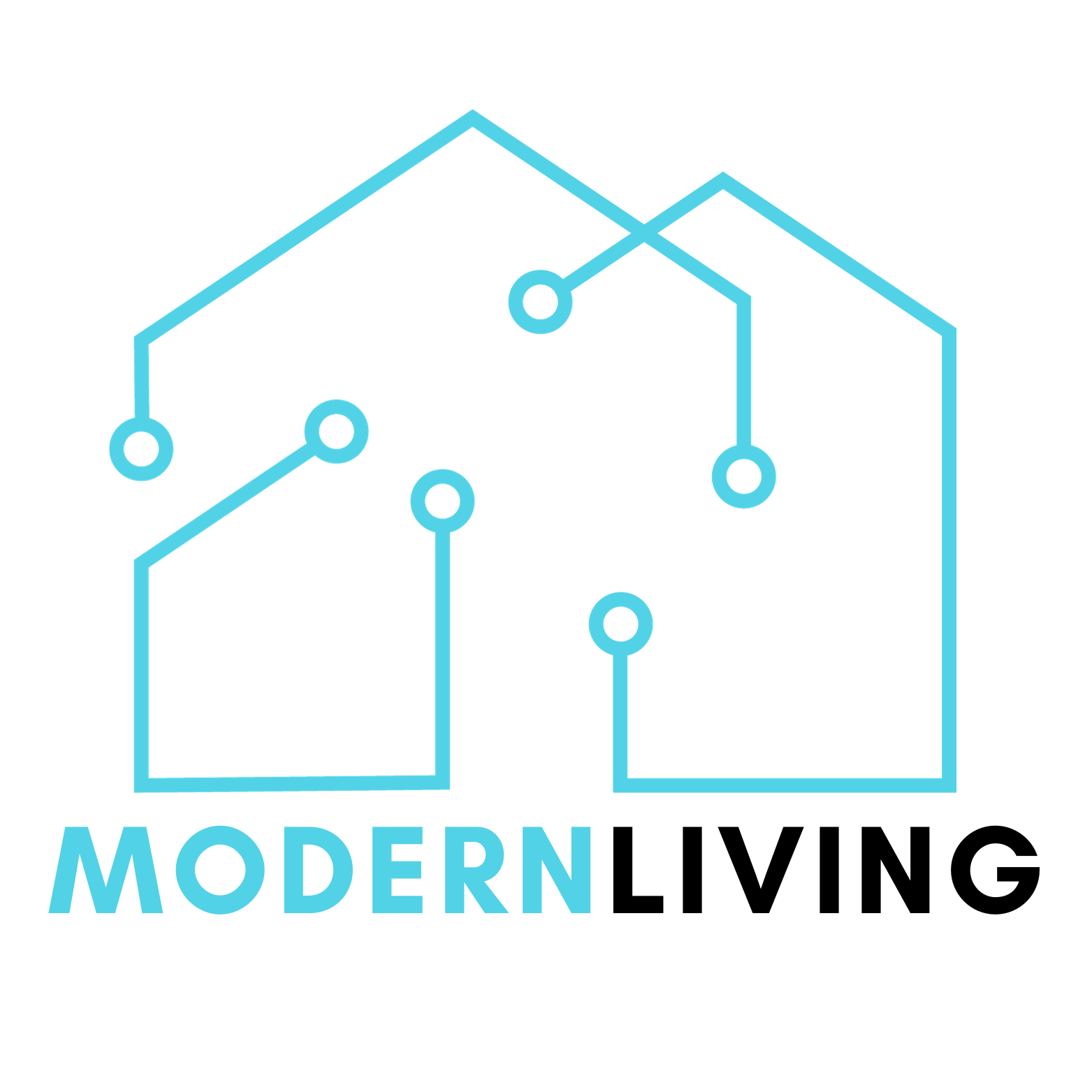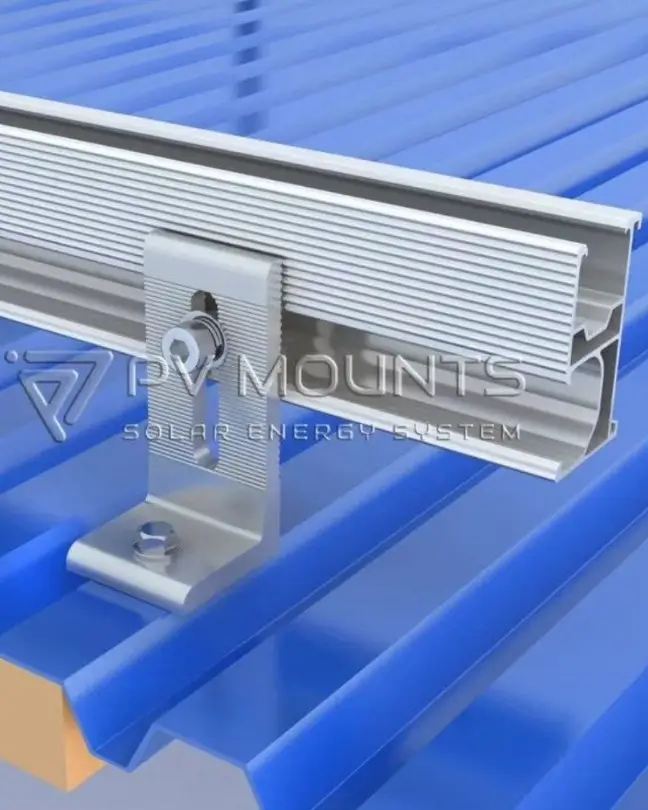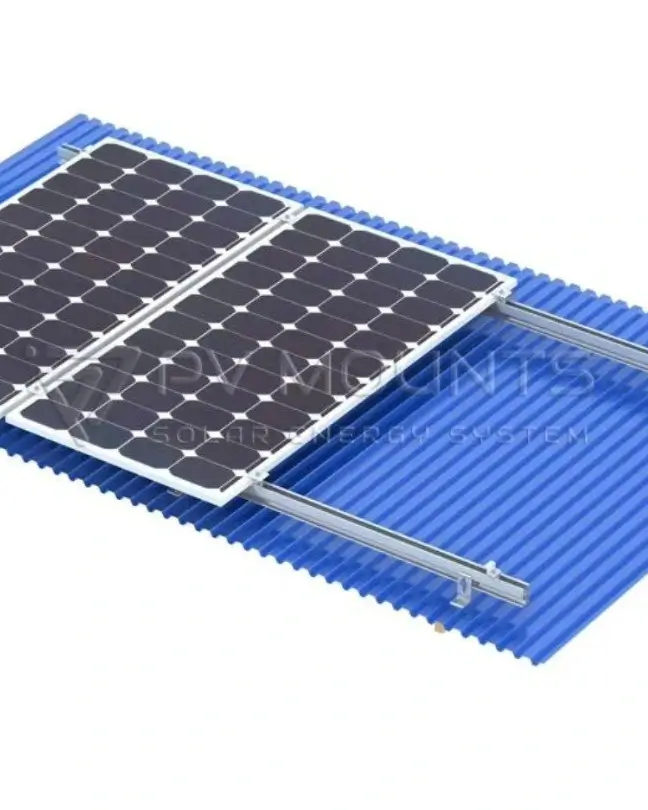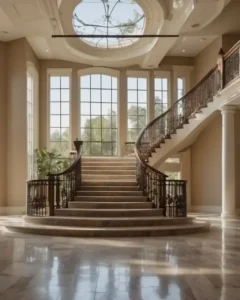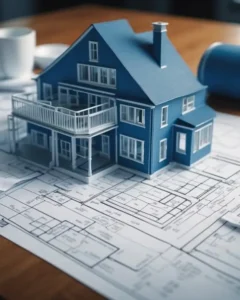As a homeowner, you might be wondering if you can put solar panels on a metal roof. The answer is yes, you can! In fact, metal roofs are an excellent surface for solar panel installation. Not only are they durable and long-lasting, but they also provide a smooth and sturdy base for your solar panels.
Installing solar panels on a metal roof can be a great way to save money on your energy bills and reduce your carbon footprint. With the right equipment and installation process, you can enjoy the benefits of solar power for years to come. So, if you’re thinking about going solar, don’t hesitate to consider a metal roof as your surface of choice.
Can you put Solar Panels on a Metal Roof? Types of Metal Roofs
As I explore the question of whether you can put solar panels on a metal roof, it’s important to first understand the different types of metal roofs that are available. Metal roofs come in a variety of materials, each with its own unique properties and benefits.
One of the most common types of metal roofs is corrugated metal roofing. This type of roofing is made from sheets of metal that are corrugated or folded to create ridges and grooves. Corrugated metal roofing is lightweight, durable, and can be installed quickly and easily.
Another popular type of metal roofing is standing seam metal roofing. This type of roofing is made from long, continuous panels that are secured with hidden fasteners. Standing seam metal roofing is known for its sleek, modern look and its ability to withstand extreme weather conditions.
Metal shingle roofing is another option for homeowners who are considering installing solar panels on their roof. Metal shingles are designed to look like traditional roofing materials, such as wood or slate, but with the added benefits of durability and longevity that come with metal roofing.
Finally, there is metal tile roofing, which is made from individual metal tiles that are designed to mimic the look of traditional clay or concrete tiles. Metal tile roofing is lightweight, durable, and easy to install, making it a popular choice for homeowners who are considering solar panel installation.
Benefits Of Installing Solar Panels On A Metal Roof
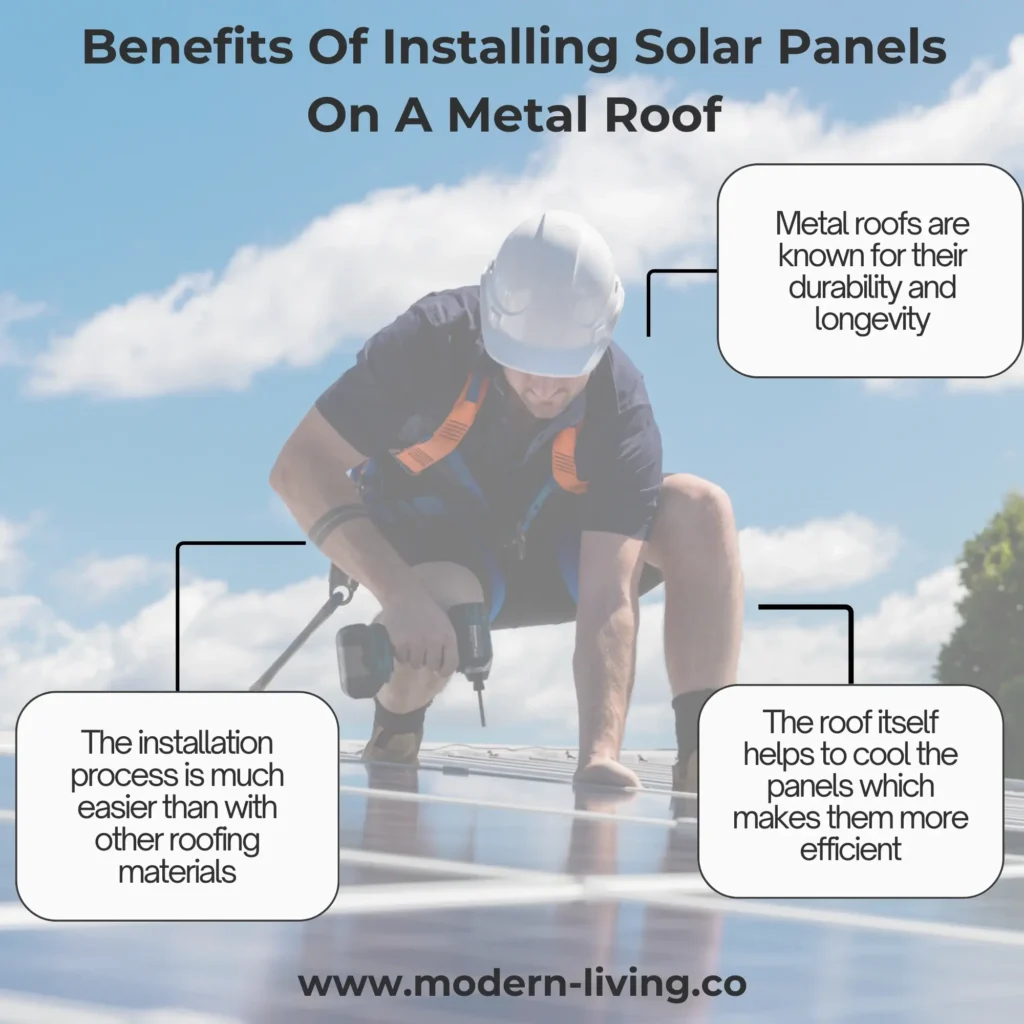
When it comes to installing solar panels, one of the most common questions is, “Can you put solar panels on a metal roof?” The answer is yes, and there are several benefits to doing so.
Firstly, the installation process for solar panels on metal roofs is rather straightforward. The metal roof provides a sturdy and durable foundation for the solar panels, making the installation process much easier than with other roofing materials. Additionally, metal roofs are compatible with thin-film solar panels, which are lighter and more flexible than traditional solar panels.
Another benefit of installing solar panels on a metal roof is that the roof itself helps to cool the panels. Metal roofs reflect sunlight and heat, which helps to keep the panels cooler and more efficient. This can result in increased energy production and lower energy bills.
Furthermore, metal roofs are known for their durability and longevity. They are resistant to corrosion, fire, and pests, which means that they can last for decades with minimal maintenance. This makes them an excellent choice for homeowners who want to invest in a long-term solar energy solution.
Finally, installing solar panels on a metal roof is an environmentally friendly choice. Solar energy is a clean and renewable energy source, and by installing solar panels on a metal roof, homeowners can reduce their carbon footprint and help to protect the environment.
Feasibility of Solar Panels on Metal Roofs
Structural Considerations
One of the main concerns when installing solar panels on a metal roof is ensuring the structural integrity of the roof. Solar panels are heavy, and if not properly installed, they can cause damage to the roof or even collapse. Therefore, it is essential to have a professional assess the roof’s condition and determine if it can support the weight of the solar panels.
In addition, the type of metal roof you have will also affect the installation process. Some metal roofs have standing seams, while others have exposed fasteners. Standing seam roofs are easier to install solar panels on since they have a smooth surface, while exposed fastener roofs require more care during installation to avoid potential leaks.
Sunlight Exposure
Another important consideration when installing solar panels on a metal roof is the amount of sunlight exposure the roof receives. Solar panels require direct sunlight to generate electricity, and if the roof is shaded for most of the day, the panels will not be as effective.
Therefore, it is essential to ensure that the roof has adequate sunlight exposure before installing solar panels. A professional can assess the roof’s orientation and shade patterns to determine if it is a viable option for solar panel installation.
Installation Process
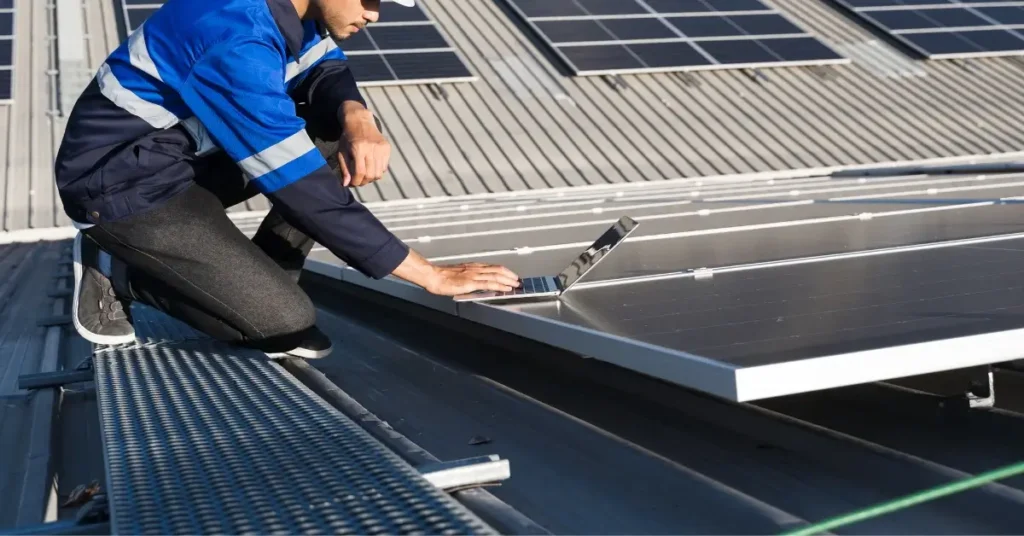
Installing solar panels on a metal roof is a great way to save money on your energy bills and reduce your carbon footprint. But how do you go about it? In this section, I’ll walk you through the installation process of solar panels on a metal roof.
Solar Mounting Systems For Metal Roofs
Before we get into the installation process, let’s talk about solar mounting systems for metal roofs. There are a few different types of mounting systems available, each with its own benefits and drawbacks.
The most common type of solar mounting system for metal roofs is the rail-based system. This system uses rails that are attached directly to the roof, and the solar panels are then attached to the rails. This system is very secure and can handle heavy loads, but it can be more expensive than other systems.
Another type of solar mounting system for metal roofs is the direct-attach system. This system attaches the solar panels directly to the roof without using rails. This system is less expensive than the rail-based system, but it may not be as secure and can be more difficult to install.
Mounting
Now that you know about the different types of solar mounting systems for metal roofs, let’s talk about the actual installation process. The first step is to determine the best location for your solar panels. You’ll want to find a spot that gets plenty of sunlight and is free from any obstructions.
Once you’ve found the perfect spot, it’s time to install the mounting system. If you’re using a rail-based system, you’ll need to attach the rails to the roof first. If you’re using a direct-attach system, you’ll need to attach the mounting brackets directly to the roof.
After the mounting system is in place, it’s time to install the solar panels. Simply attach the panels to the mounting system, making sure they’re secure and properly aligned.
Maintenance and Durability
As a homeowner, you want to ensure that your solar panel system is operating at peak performance and that it lasts as long as possible. Fortunately, solar panels on a metal roof require minimal maintenance and can last for decades.
Cleaning
Cleaning your solar panels is essential to maintain their efficiency. Dirt, dust, and debris can accumulate on the panels and reduce their power output. Cleaning your solar panels on a metal roof is easy and straightforward. You can use a soft-bristled brush or a garden hose to remove any dirt or debris.
It is important to note that you should never use abrasive materials or harsh chemicals to clean your solar panels. These can damage the panels and reduce their efficiency.
Longevity
One of the biggest advantages of installing solar panels on a metal roof is their longevity. Metal roofs can last for up to 70 years, which is longer than the lifespan of most solar panel systems. This means that you won’t have to remove your solar panels to replace your roof.
Additionally, metal roofs are highly durable and can withstand extreme weather conditions, such as high winds and heavy snow. This makes them an excellent choice for solar panel installation, as the panels can be securely mounted to the roof without the risk of damage.
Cost and Savings
As with any home improvement project, the cost of installing solar panels on a metal roof can vary depending on a variety of factors. In this section, I will discuss the initial costs and long-term savings associated with installing solar panels on a metal roof.
Initial Costs
The initial cost of installing solar panels on a metal roof can be higher than other roofing materials due to the additional work required to mount the panels. However, the cost of solar panels has decreased significantly in recent years, making them a more affordable option for homeowners.
When considering the initial costs of installing solar panels on a metal roof, it is important to factor in the potential savings on energy bills. In some cases, the savings on energy bills can offset the initial cost of installation within a few years.
Long-Term Savings
One of the biggest advantages of installing solar panels on a metal roof is the long-term savings on energy bills. Solar panels generate electricity from the sun, which can significantly reduce or even eliminate the need for traditional electricity from the grid.
In addition to saving money on energy bills, installing solar panels on a metal roof can also increase the value of your home. According to a report by the National Renewable Energy Laboratory, homes with solar panels sell for an average of 4.1% more than homes without solar panels.
FAQ
What metal roof is best for solar panels?
Standing seam metal roofs are the best type of roof for solar panels. They have a sleek, uniform surface with no exposed fasteners, making it easy to install solar panels without causing leaks. The raised seams also provide shade that can help cool the panels and improve their efficiency.
What is the gap between solar panels on a roof?
The gap between solar panels on a roof is typically 4 to 7 inches, or 10 to 18 centimeters, to allow for thermal expansion and contraction of the panels’ frames. This gap also helps with ventilation and reduces the risk of damage from wind, rain, and snow.
Do solar panels need air gap?
Solar panels do not necessarily need an air gap, but it can be beneficial for increasing efficiency and protecting the panels from damage. An air gap allows for air circulation, which helps keep the panels cooler and reduces the risk of overheating.
If you liked this blog article about the topic: Can You Put Solar Panels on a Metal Roof, don’t forget to leave us a comment down below to tell us about your experience.
Feel free to also check out our other Articles from the category “Solar System“
